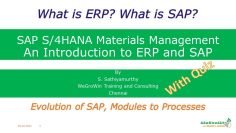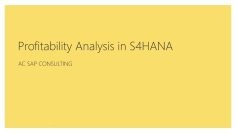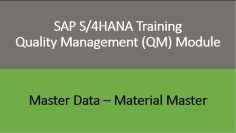This video explains the concept of Demand Management in SAP Materials Management, focusing on the definition of demand, the importance of demand management in business, and different elements of demand management in SAP. The key points discussed in the video are:
- Definition of Demand: Demand refers to the amount of goods or services that customers are willing to buy by paying a certain amount. It can be for goods or services. Demand can be classified into two types: independent demand and dependent demand. Independent demand is the demand that comes directly from the market, while dependent demand is the demand for materials that are used in another product.
- Importance of Demand Management: Demand management is crucial for planners and buyers as it helps in balancing the demand and supply. The main goal of demand management is to improve customer service, reduce application lead time, and reduce storage costs.
- Elements of Demand Management in SAP: There are various elements used in handling demand management in SAP. These include consumption mode and logic, planning strategies, availability check, and total replenishment.
- Consumption Mode and Logic: Consumption mode is maintained in the MRP3 view. It defines the period and mode (backward, forward, or both) of consumption of the plan. Consumption elements can include sales orders, invoices, dependent requirements, and reservations.
- Planning Strategies: Planning strategies in SAP include make to stock, make to order, and assemble to order. These strategies are combined with requirement types for the planning process.
- Availability Check: The availability check defines how the availability of a material has to be checked in different requirements. It is a critical parameter that controls how and which elements to check for availability.
- Total Replenishment: Total replenishment lead time is the total time required before the product is completely available again. It is the cumulative lead time to produce a material.



























































